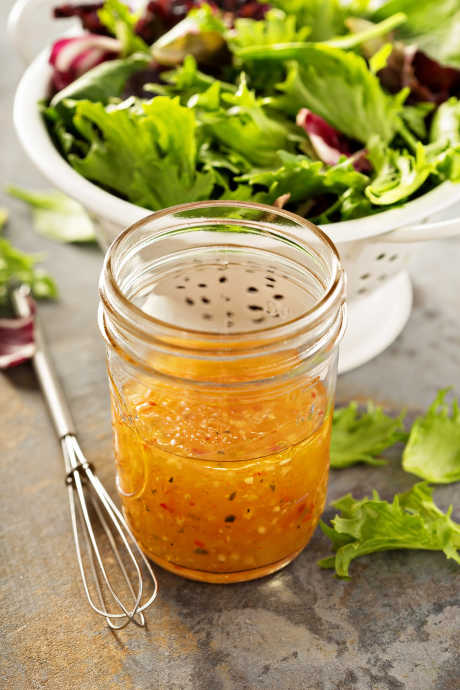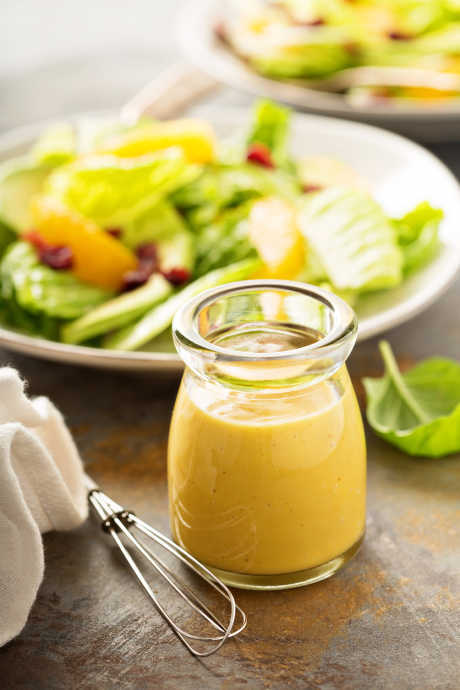Dress Up Your Greens With Homemade Salad Dressing
Posted by April on Jan 10th 2019
It's that time of year: Many people are working toward their New Year’s resolutions of eating healthier or perhaps even losing weight. You may be reducing your intake of fat, sugar, and carbohydrates, and increasing the amount of vegetables and leafy greens you eat. One commonly overlooked source of unhealthy fats, preservatives, and sugars is in commercially manufactured salad dressings. Although vegetables and leafy greens can be healthful, dousing them in bottled salad dressings is not.
However, we've got good news: Making your own salad dressings is way easier than most people realize. With homemade salad dressings, you are in control of the fat, sugar, and of course, the flavor. It's also much less expensive to make your own than to buy bottled dressing. Once you’ve stocked up on basic ingredients, you'll find whipping up a batch of fresh dressing takes less time than washing the greens for your salad.
Basic Ingredients for Salad Dressing
Most salad dressings feature several common ingredients. Typical recipes use differing ratios of oils, vinegars, lemon or lime juice, and seasonings. Ingredients like garlic and honey are common in many salad dressings, along with herbs like thyme, basil, chives, and parsley. Creamy dressings may feature buttermilk or sour cream. If you keep these basic ingredients on hand, you can create a wide variety of salad dressings without a special trip to the market.
The oil you use in your salad dressing is a key factor. Extra virgin olive oil is popular, but it may overwhelm other, more delicate flavors. Consider using a lighter olive oil, or try canola, grapeseed, or safflower oil. Walnut oil and hazelnut oil make wonderful choices for salad dressing, especially when paired with crunchy nuts. But be aware that, like olive oil, they do impart rather strong flavors.

Salad dressing can add a touch of tang to blander veggies by adding an acidic ingredient to the mixture. Lemon juice and red wine vinegar are common choices in many salad dressing recipes, but balsamic vinegar should be used with care. Its strong flavor can be overwhelming.
As a general rule, pair heavier dressings with more substantial greens, and lighter dressings with more delicate greens. Thick, creamy dressings go well with hearty greens like kale and romaine. Simple oil and vinegar-based dressings are better for spinach and baby lettuces.
Salad Dressing Recipes: Vinaigrette
A basic vinaigrette can be used to dress a salad or as a marinade for meat. The basic recipe has many variations, and it’s easy to change the seasonings to create a new taste sensation. Vinaigrette dressings are best made immediately before use. Do not dress the salad until you’re ready to eat, because the acids in it will make the greens wilt.

Basic Vinaigrette
Ingredients:
1 clove garlic, minced
3/4-teaspoon salt
1/4-cup red wine vinegar or lemon juice
3/4-cup olive oil
In a food processor, add all of the ingredients except the olive oil. Blend thoroughly. Slowly drizzle in the oil while blending. If you don’t have a food processor, whisk the ingredients together in a bowl or use an immersion blender. You can also use a jar with a lid to shake it all together. Refrigerate the dressing before using and shake well before dressing the salad.
Vinaigrette Variations
To the basic vinaigrette, add one of the following:
1/4-cup finely chopped fresh herbs like dill, basil, or chives
1 teaspoon cracked peppercorns and a teaspoon of minced lemon zest
1/3-cup crumbled blue cheese
Salad Dressing Recipes: Thick and Creamy
Two classic salad dressings to know by heart are ranch and honey mustard. Not only are they delicious on fresh leafy greens, they also make great dipping sauces. Ranch dressing is one flavor that can convince kids to eat vegetables happily. Honey mustard complements hearty salads full of protein, nuts, and diced fruit.

Simple Ranch Dressing
Ingredients:
1 garlic clove, peeled
1/4-teaspoon salt
3/4-cup buttermilk
3 tablespoons lime juice
1 tablespoon fresh minced parsley
1 tablespoon finely chopped chives
In a food processor, blend the garlic and salt together until smooth. Add the buttermilk, lime juice, and herbs, pulsing after each addition. Add salt to taste.
Honey Mustard Dressing
Ingredients:
Juice of one lemon
1 tablespoon apple cider vinegar
3 tablespoons honey
3/4-teaspoon finely minced garlic
1/4-teaspoon salt
2 tablespoons Dijon mustard
1/4-cup olive oil
Blend all of the ingredients except the olive oil in a food processor until completely blended. Slowly add the oil and process until smooth. Alternately, you can mix it all in a mason jar and shake vigorously until combined.
As an avid farmer, gardener, and cook, April Freeman is an expert in the food production process. She raises pigs, chickens, beef cattle, and grows a wide variety of vegetables and fruits on her family farm in Tennessee. Learn more about April’s firsthand experience with farm-fresh food on her blog, Feeding My Family.
 Free shipping over $49
Free shipping over $49










